Why do people count bees?
It is June and bees are busy all over the UK. This month we find out how people count bees and why it is important to find out how many there are.
05 June 2023
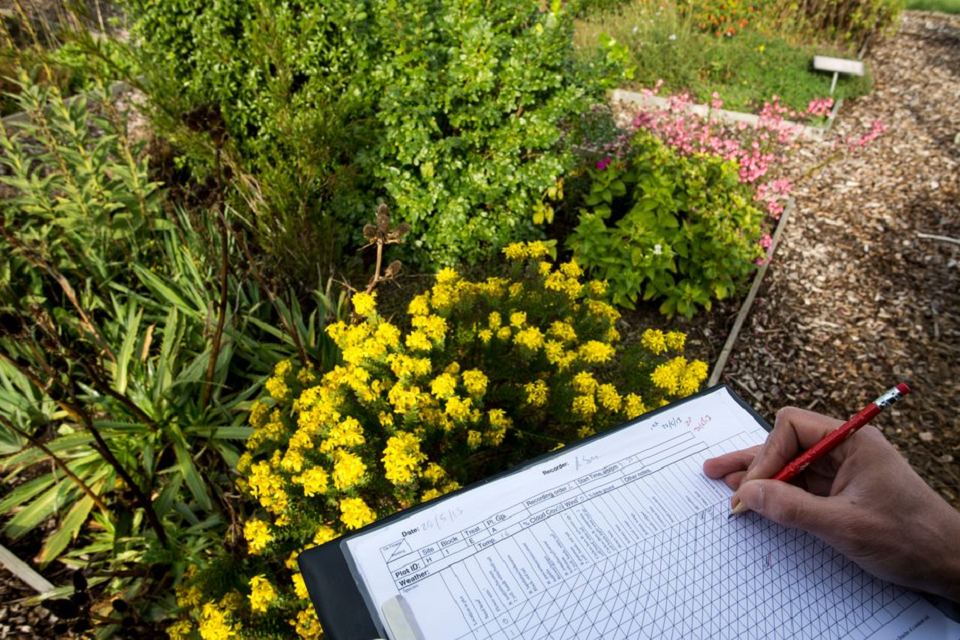
Image: Counting bees and other insects
What counting bees tells us
Explore the meaning behind the words in bold in our glossary at the bottom of this page.
Counting bees helps us to know how many bees there are. This is important because it helps us understand where bees are and whether their numbers are going up or down.
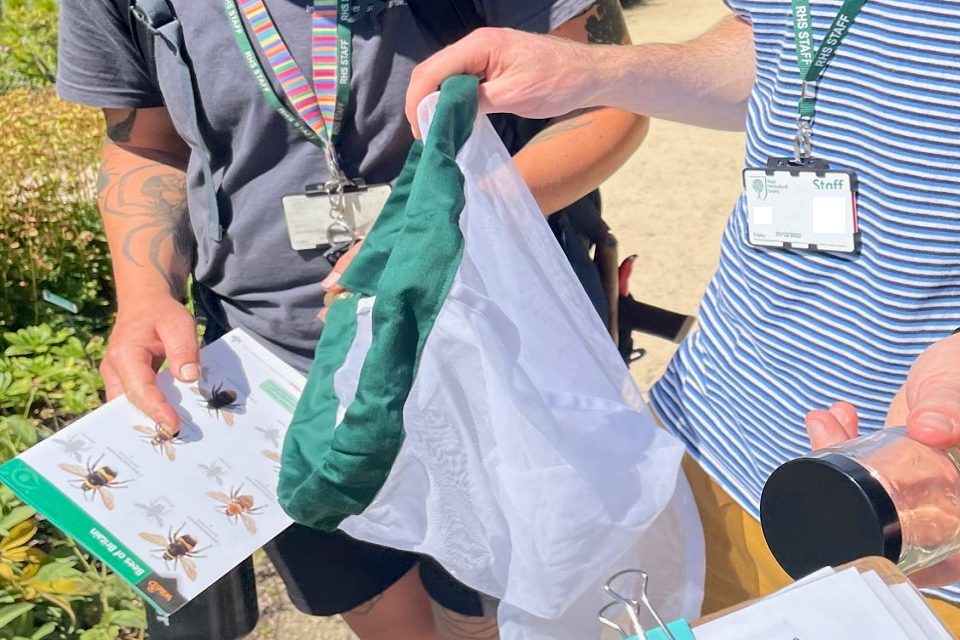
Image: Entomologists using a sweep net
Counting by looking
Scientists count the number of bees visiting an area over an amount of time, for example 10 minutes, and record the number of bees they see. They can compare this with records of bees counted in other areas and at different times of year. Entomologists might use a sweep net (see photo above), to catch bees in an area to get a closer look and help identify which type of bees are there. Scientists have to be very careful to make sure they don’t get stung and that they don’t hurt the bee while getting a closer look.
Counting by listening
People can also count bees using a device called a Polly, which listens to the sound that bees make and uses this information to work out how many there are nearby. Watch the video below to find out more:
Activity
Watch the video from Casey Woodward, the Founder of AgriSound, to find the answers to these questions:
1. What percentage of all food crops is dependent on insects?
2. As well as bees, what other pollinators does Casey mention?
3. What sound is the Polly device listening for?
4. As well as listening for pollinators, what else can the Polly device tell us?
(Find the answers below the glossary)
If bee numbers are going down, we know that we need to help them
There are lots of ways to do this, including growing nectar and pollen rich flowers for them to feed on, providing water for them to drink and creating bee hotels. You can find out more about this using the buttons below:
Grow flowering plants
Find out which flowering plants to grow to support bees:
Plants for wildlife
Establish bee corridors
Providing corridors of flowers so pollinators can move between areas is a great way to help bees:
Bee corridors
More ways to welcome bees
From building nesting sites to providing water sources, there are lots more ideas in this booklet:
Bee aware
Activity
Watch the video from Casey Woodward, the Founder of AgriSound, to find the answers to these questions:
1. What percentage of all food crops is dependent on insects?
2. As well as bees, what other pollinators does Casey mention?
3. What sound is the Polly device listening for?
4. As well as listening for pollinators, what else can the Polly device tell us?
(Find the answers at the bottom of the page)
Recording bees at St George's School
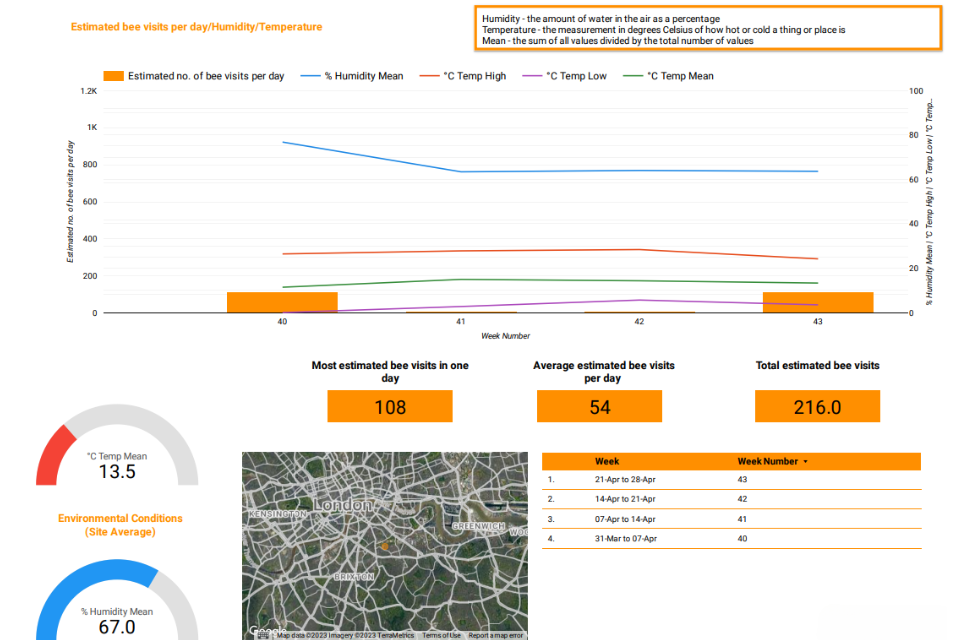
Image: Recording bees at The Bee Garden, St George’s Primary School, Camberwell
The graph above (click to enlarge it) shows the number of bee visits to St George’s School Bee Garden during April this year recorded by the Polly device they have in their garden. We can see from the graph that there were no bee visits during weeks 41 and 42.
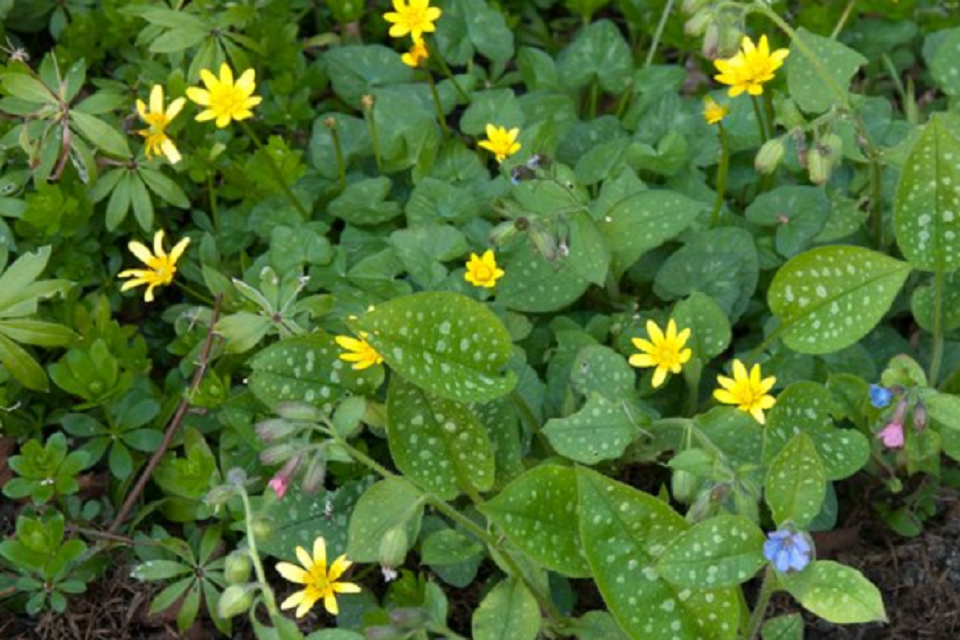
Image: The yellow flowers in this photo are lesser celandine (Credit: RHS Tim Sandall)
A possible reason for this is that a short-flowering plant started to produce flowers nearby, away from the school garden, and the bees started to visit that plant instead. Plants that don’t flower for very long need to make sure that they attract a lot of pollinators quickly, for example lesser celandine (see photo above). They do this by making their nectar very appealing, with lots of the nutrients that bees need. This means that bees (and other pollinators) will visit that plant before going to their usual plants to feed.
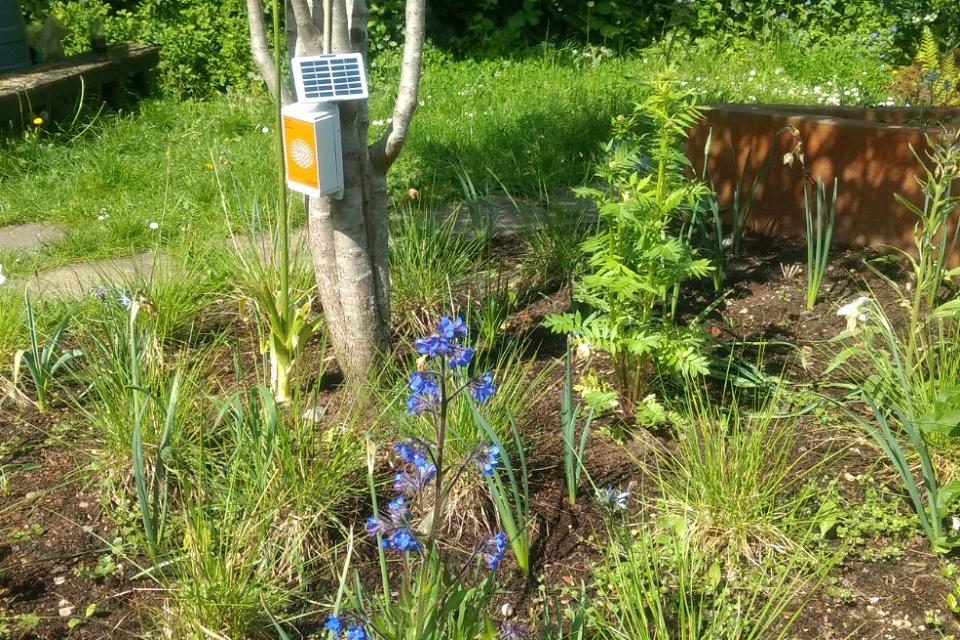
Image: Polly device at St George’s Primary School, Camberwell (Credit: St George’s Primary School)
We can't wait to see if the number of bee visits to the garden increases as the weather warms up!
Glossary
|
Entomologists
|
Scientists who study insects.
|
|
Pollinators
|
Animals that move pollen from one flower or plant to another e.g. bees.
|
|
Sweep net
|
A special net which is swept over plants to collect insects (and other invertebrates, for example spiders) so that they can be studied by scientists.
|
Find out more about bees
If you are just buzzing to find out more about bees, check out our monthly updates:
Learn more about pollinators:
September update
Find out more about pollen:
October update
What happens to bees in the colder months?
November update
How many types of bees are there in the UK?
December update
Discover how bees help put the food on your plate:
January update
Explore the lifecycle of a bumblee:
February update
What to sow to help bees in June:
March update
Find out about bee corridors:
April update
Learn which flower shapes bees like best and why:
May update
Answers to video questions
1. What percentage of all food crops are dependent on insects?
Answer: 75%
2. As well as bees, what other pollinators does Casey mention?
Answer: Moths and flies.
3. What sound is the Polly device listening for?
Answer: Insect wing beats.
4. As well as listening for pollinators, what else can the Polly device tell us?
Answer: It can tell us about the weather.